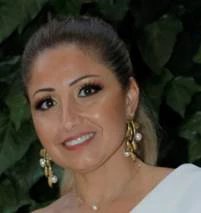 Boat sailing along the river, Bangladesh. Photo: Scott Wallace / World Bank
Boat sailing along the river, Bangladesh. Photo: Scott Wallace / World Bank
Located in central Bangladesh, the capital city of Dhaka attracts the majority of the area’s rural migrants and has grown to a population of 18 million. It is expected to become the third most populous city in the world by 2050. Dhaka’s landscape is dominated by five rivers and 200 canals, which all play a critical role in supporting the city – the rivers are an integral part of the lives of its inhabitants, as they provide transport, drainage, recreation, and fisheries. These rivers are also considered the lifeline of the environment and ecosystem of the Greater Dhaka area.
Despite its national importance, however, Dhaka is now the fourth-least livable city in the world, according to the Economist Intelligence Unit's Global Livability Index 2020. The mismanagement of the rivers is one of the contributors to this low ranking. Due to pollution, the quality of Dhaka’s rivers is far below the national standards. Water pollution and overpopulation lead to poor drainage systems, which result in two extremes: reduced river flows in some places and waterlogging or flooding in others.
Fragmented government institutions have to strengthen their capacities to deal with the growing challenges exacerbated by rapid urbanization and population growth. The environmental, health, and economic costs associated with river pollution are estimated to be around $2.83 billion annually (World Bank Country Environmental Analysis, 2018). And it has been estimated that without any action, the total financial loss due to river pollution would be $51 billion over the next 20 years (2030 WRG Bangladesh Dhaka Rivers Rapid Assessment Study, 2021). The major causes of water pollution that are degrading the city’s river ecosystems include:
● Domestic wastewater
The current sewage network covers only 20% of the city and is inadequate and inefficient. Urban areas lack public wastewater management services and large amounts of untreated municipal wastewater are discharged into water bodies.
● Industrial effluents
Daily discharge of industrial wastewater is huge due to the rapid growth of textile, leather, chemical, and pharmaceutical industries, and there are very few operational effluent treatment plants. Over 10,000 industries around Dhaka discharge untreated effluents into surface water (Department of Environment, 2018). Absence of proper enforcement of regulatory compliance according to environmental performance standards makes the situation worse.
● Biomedical waste
Toxic liquid waste and infectious biomedical waste from hospitals, laboratories, and other healthcare facilities are often discharged into drains and sewage systems, posing serious hazards to public health and the environment.
● Encroached structures
When structures are built encroaching along river banks, they add yet another source of pollution, as huge volumes of garbage are ultimately discharged into the rivers for landfilling purposes.
Unregulated use of water resources for economic and social activities creates an urgent need to protect and restore our ecosystems , which in turn, contributes to the achievement of all 17 Sustainable Development Goals by their 2030 target date. Hence in March 2019, the United Nations General Assembly declared the years 2021 to 2030 as the Decade on Ecosystem Restoration, which aims to massively scale up the restoration of natural ecosystems that have been degraded and destroyed by human activities.
In reality, restoration of water ecosystems is a complex issue and requires partnership at many levels to achieve long-term water solutions. In practice, this means bringing together people from different groups – such as governments, business groups, civil society, academia, and the investor community – to build mutual trust that will translate into meaningful decisions and actions.
On this note, the 2030 Water Resources Group (2030 WRG) – through its Bangladesh Water Multi-Stakeholder Partnership (BWMSP) – is working together with the World Bank and Government of Bangladesh (GoB) partners on a project proposal to support the ecological restoration of the rivers and canals around Dhaka. Preliminary discussions have focused on improving the water flows and navigability of five major rivers – Buriganga, Turag, Balu, Tongi, and Shitalakkhya – and their tributaries in and around the greater metropolitan region, as well as enhancing domestic wastewater management around Dhaka.
A project of this scale will require the involvement of multiple ministries, implementing agencies and meaningful private sector engagement. This is where the 2030 WRG steps in. An innovative public-private platform, 2030 WRG analyzes, coordinates, and supports dialogue and collaboration among diverse stakeholders to help catalyze water sector transformations. The global partnership has been working in Bangladesh since December 2015, following the Prime Minister’s approval, and gazetting of the BWMSP, and has developed partnerships between the government, private sector, and civil society to value water as a finite resource. This maturity, along with the quasi-legal status of the BWMSP, has resulted in a well-established and trusted program with the ability to attract funding for large, long-term projects to address complex water challenges.
With cross-sector collaboration and support from all stakeholders, it is possible to restore and protect degraded ecosystems, support resiliency, and bring life back to the rivers in and around Dhaka. We will continue to work with the Government of Bangladesh to turn this possibility into a successful reality.




Join the Conversation